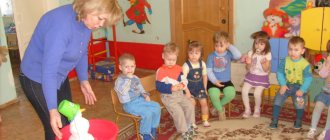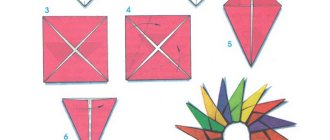Features of development of children 3–4 years old
For the physical education of children 3–4 years old in an optimal manner and in accordance with their motor capabilities, the teacher needs basic knowledge of the anatomical and physiological features of the development of both individual organs and systems, and the entire organism as a whole. It is known that each age period has certain specific development. Children of the fourth year of life also have such characteristics.
Indicators of the physical development of children are height, weight, chest circumference, the state of the skeletal and muscular systems, internal organs, as well as the level of development of motor skills, that is, their physical fitness.
The growth of a child in the fourth year of life slows down somewhat relative to the previous period - the first three years. So, if by 2 years the height of children increased by an average of 10–12 cm, by 3 years – by 10 cm, then by 4 years – by only 6–7 cm. At 3 years, the average height of boys is 92.7 cm, girls - 91.6 cm, respectively at 4 years - 99.3 cm and 98.7 cm - growth indicators are almost the same. The growth of children in the fourth year of life is interconnected with the development of basic types of movements - jumping, running, throwing, balance. Tall children run faster than their peers, while short children take relatively small steps, but complement them with a high pace of movement. The ability to run fast is also determined by individual differences and coordination capabilities, which are not yet great in this age group.
Between the ages of three and six years, annual weight increases are also approximately the same for children of both sexes. Weight gain averages 1.5–2 kg. At 3 years old, boys weigh 14.6 kg, and girls - 14.1 kg. By the age of 4, this ratio changes, respectively amounting to 16.1 kg and 15.8 kg. The chest circumference increases, but the difference between boys and girls in this indicator is insignificant. At 3 years old, this value is 52.6 cm (boys) and 52 cm (girls), at 4 years old - 53.9 cm and 53.2 cm.
The general pattern of development of the musculoskeletal system in the early periods of childhood is its flexibility and elasticity. As the child grows, the individual bones of the skull fuse and finally form. By the age of 3–4 years, the fusion of the occipital bone is completed. By the age of four, the temporal bone also acquires its shape, and the formation of interosseous sutures is completed. The volume of the skull continues to increase, reaching 80% of the volume of the adult skull by the age of three.





